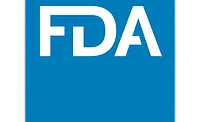TECH FLASH
Don’t depend on e-commerce sites for accurate product information
While a processor’s product label may provide plenty of nutritional and allergy information, that information often doesn’t find its way to consumer web sites.
|
|
While food and beverage processors do their part to get nutritional and allergy information on their labels, much of this information gets lost—leaving consumers guessing—on e-commerce sites, according to November 2012: Food & Beverage eCommerce Insight Study from Clavis Technology. The survey found missing, inaccurate and incomplete product and brand information in leading online stores.
The study measured the state of information quality (SKU integrity for the online shelf) for over 7,000 branded products across 10 leading online stores during October 2012. The study was carried out using the supplier’s e-commerce intelligence solution, Clavis eCommerce Insight, which automatically monitors product information in online stores and generates reports and analytics based on standardized metrics.
Consumers expect interesting, relevant and personalized encounters online, which can only be fuelled by accurate, complete and properly presented product information. All too often, the study found, e-commerce retail food and beverage websites don’t measure up in providing the information consumers can easily find on labels at the retail store. Not only does this low-quality information hamper online sales, but it can also damage sales through “bricks and mortar” outlets as a growing proportion of consumers research their purchasing options online—even if they ultimately do their buying in store.
The November study surveyed 10 of the largest online stores in North America and the UK. It covered 500 brands encompassing more than 7,000 packaged food and beverage products and 23,000 web pages across the 10 online stores. It looked at five basic attributes: product name, brand owner name, product description, product image and price. The study also assayed eight nutritional attributes: carbohydrates, carbohydrates of which sugars, dietary fiber, fat content, fat of which saturates, cholesterol, calorie content and Vitamin C.
Results were based on three key online information quality metrics: accuracy, completeness and presentation of product information. The study found:
- 67 percent of products analyzed were missing essential information such as brand name, ingredients or nutritional information. In this category of completeness, 3 percent of products were missing brand names, 14 percent failed to list ingredients, 18 percent had no nutrient information, and 29 percent were missing the manufacturer name.
- 25 percent of product pages lacked an appropriate product image or extended description. Of these, 7 percent didn’t include packet size, 8 percent were missing additional descriptions, and 14 percent had an invalid brand.
- Misspelling and misrepresentation of brands were common across all sites analyzed.
- 8 percent of products listed on the online stores included nutrition information that was suspect or inaccurate.
While retail store shoppers can compare product information by reading labels, online shoppers must rely on what information the e-commerce retailer includes online. Food and beverage processors certainly have control of what goes on the label, and how products are presented in a retail setting, but they can lose that control when their products appear in an online shopping context. Processors, therefore, need to work closely with this sector of the supply chain to make sure their products are presented correctly, completely and accurately—with the same information that appears on the label.
For more information on this study, visit the Clavis Technology website.
Looking for a reprint of this article?
From high-res PDFs to custom plaques, order your copy today!








